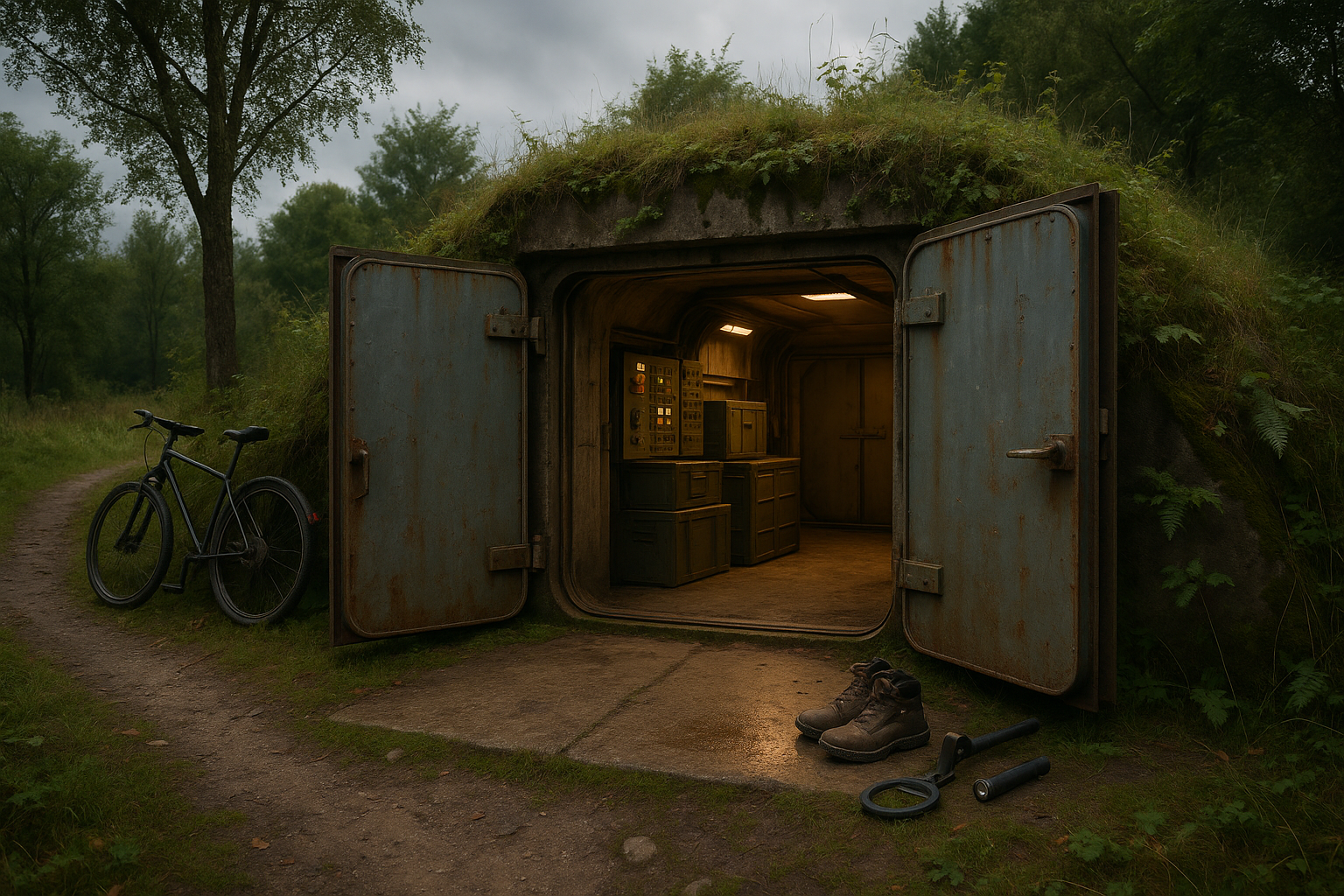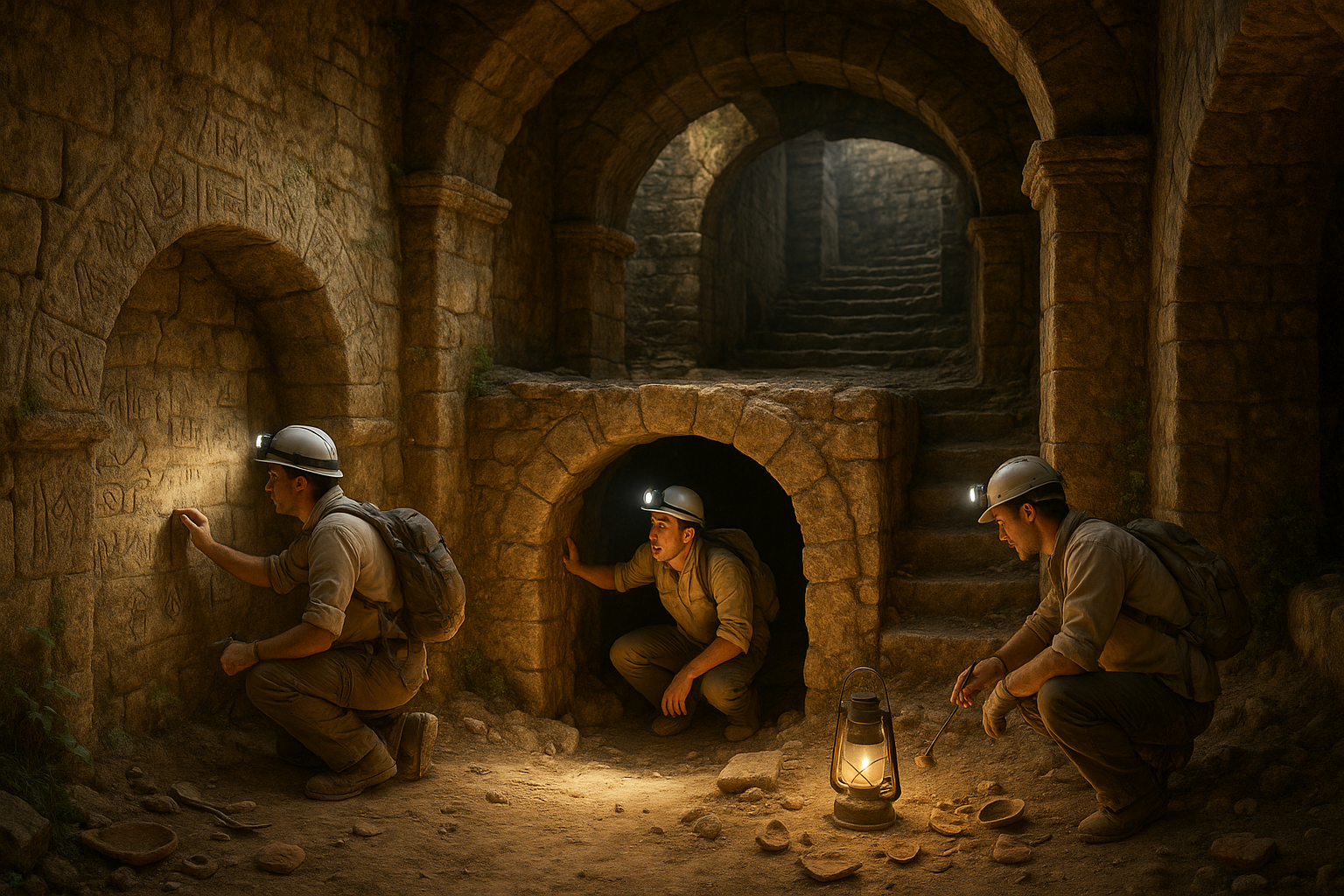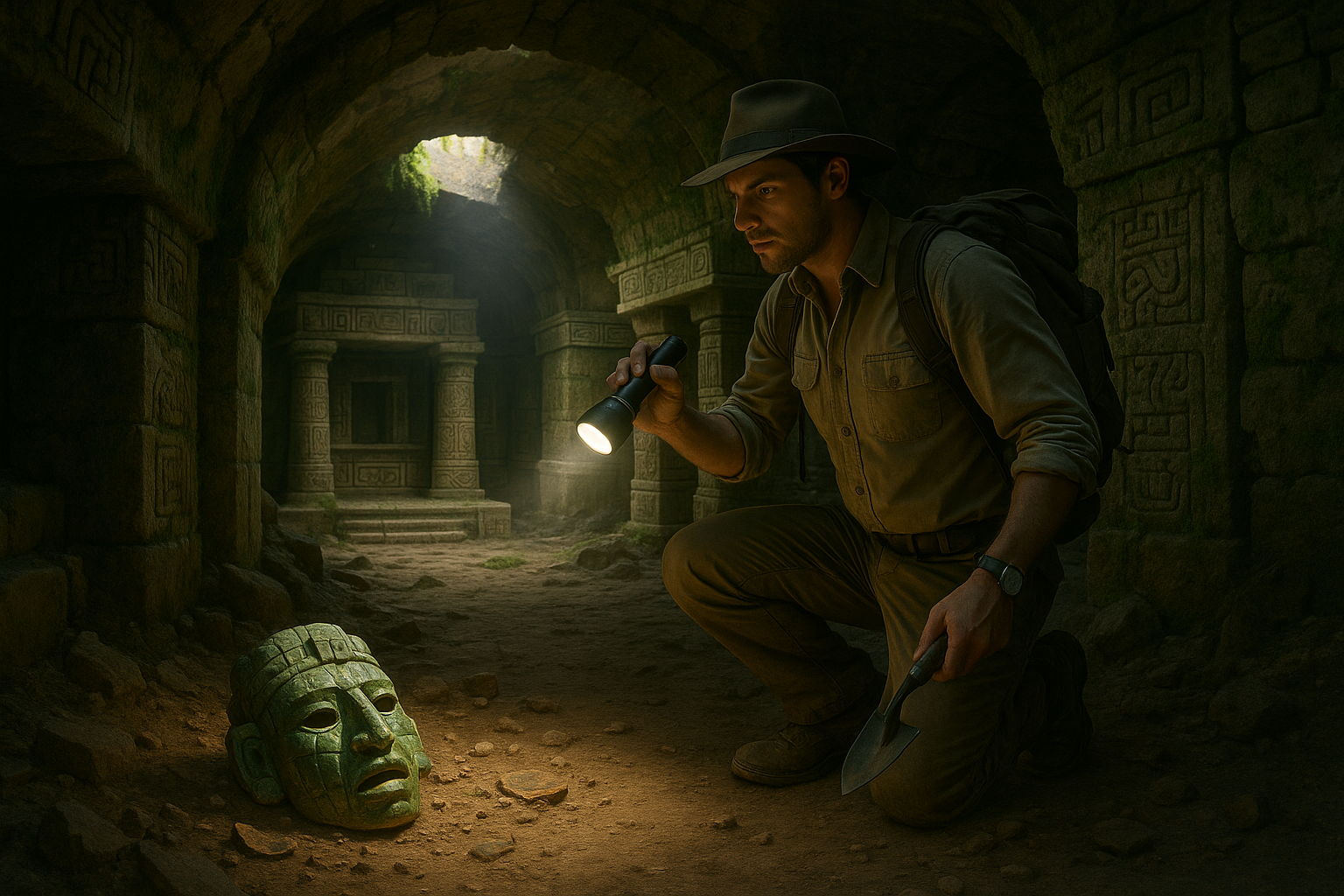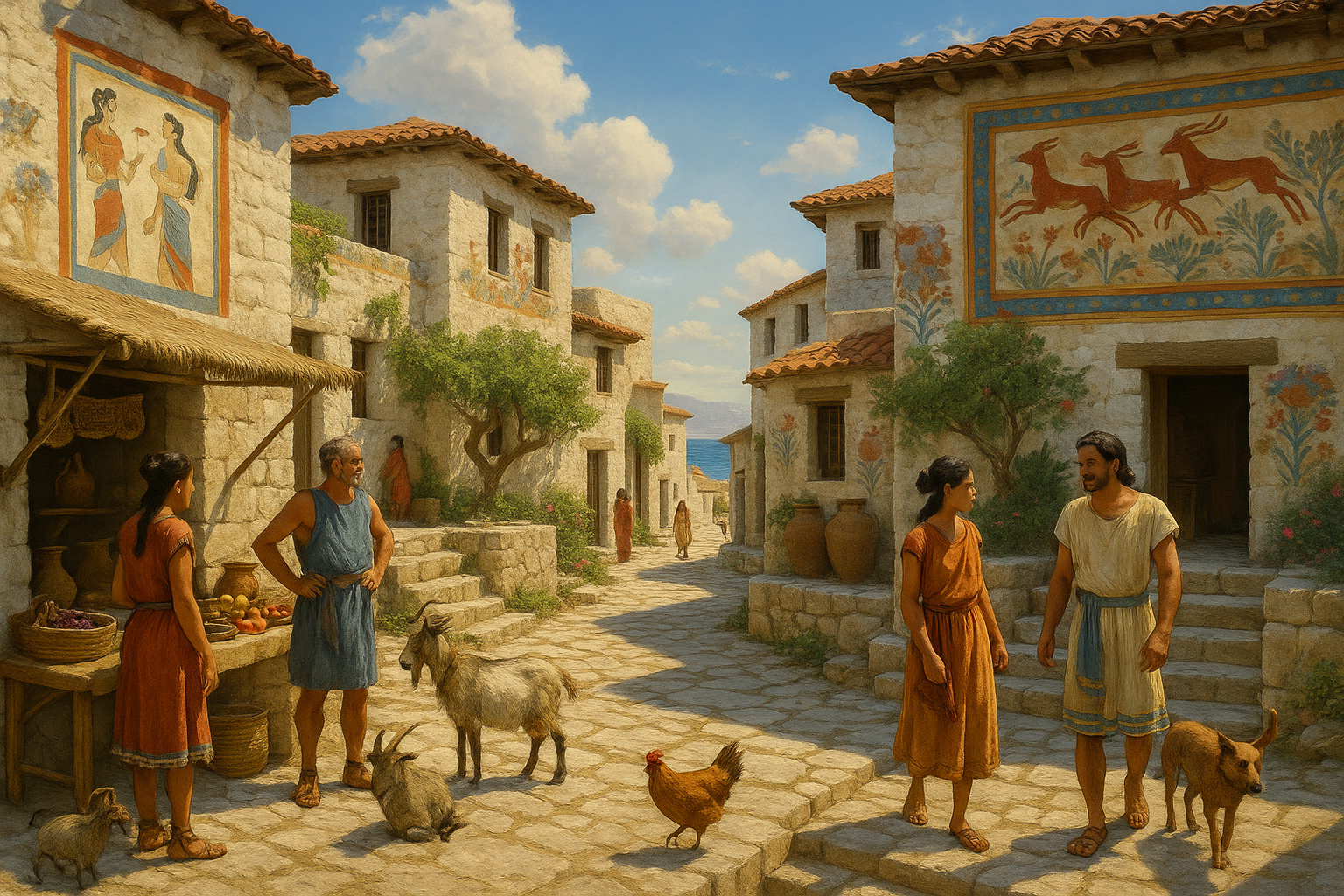Imagine a city where the wonders don’t stop at the surface, where an entire world thrives beneath the bustling streets, offering secrets and surprises at every turn. Welcome to Montreal’s Underground City, a marvel of urban design and cultural richness that defies the ordinary definition of a cityscape. This sprawling network, officially known as “La Ville Souterraine,” stretches across 33 kilometers, making it the largest underground complex in the world. It’s not just a refuge from the harsh winter weather that Montrealers have come to rely on; it’s a vibrant ecosystem in its own right, pulsating with life and opportunities. 🌆
As you descend into this subterranean wonderland, you’ll discover a labyrinth that interconnects shopping malls, hotels, residential and commercial complexes, universities, and even metro stations. It’s a city beneath a city, a concept that can seem almost mythical to those unfamiliar with it. But once you experience its intricate pathways and warm, welcoming atmosphere, you’ll understand why it’s a beloved part of Montreal’s identity. This isn’t merely a survival mechanism for the cold; it’s a testament to human ingenuity and a celebration of community spirit. The Underground City transforms what could be a dreary escape from winter into a dynamic environment filled with excitement and adventure.
Our journey through this hidden gem will explore several key aspects that make Montreal’s Underground City a unique phenomenon. First, we’ll delve into its history, uncovering the visionary ideas that led to its creation and how it has evolved over the decades. You’ll learn about the architects and planners who dared to dream big, envisioning a seamless blend of urban convenience and architectural beauty. We’ll also highlight significant milestones in its development, showcasing how each phase added new layers of complexity and charm.
Next, we’ll guide you through the cultural and social aspects that define life underground. The Underground City is not just a place to shop or catch a train; it’s a hub of cultural exchange and social interaction. We’ll introduce you to the artistic installations and cultural events that take place year-round, providing a feast for the senses and a platform for local artists to shine. From pop-up art exhibits to live performances, the cultural heartbeat of this hidden city is palpable, offering a fresh perspective on Montreal’s creative spirit.
Finally, we’ll navigate the practical side of the Underground City, offering tips and insights to help you make the most of your visit. Whether you’re a local looking for new adventures or a tourist eager to explore beyond the traditional attractions, we’ll provide a roadmap to the must-see destinations and hidden corners that often go unnoticed. From cozy cafes and gourmet restaurants to trendy boutiques and serene parks, there’s something for everyone in this subterranean paradise.
So, whether you’re an urban explorer at heart or simply curious about what lies beneath, join us as we uncover the secrets of Montreal’s Underground City. It’s a journey that promises to inspire and intrigue, offering a glimpse into a world where innovation and tradition harmoniously coexist. Get ready to embark on an adventure that transcends the ordinary and invites you to discover the extraordinary. Let’s dive into the depths and unlock the mysteries of this underground wonderland. 🌍
The Underground City: An Overview
Montreal’s Underground City, also known as RÉSO, is a labyrinthine network that spans over 33 kilometers, connecting shopping malls, hotels, museums, universities, and metro stations. This architectural marvel attracts locals and tourists alike, offering a climate-controlled environment, especially enticing during the harsh Canadian winters. The Underground City is not just a utility for traversing the urban landscape; it’s a world in its own right, bustling with commerce, art, and culture.
The origins of this subterranean wonder date back to the 1960s when Montreal was in the midst of modernization. The initiative was driven by the need to create a pedestrian-friendly environment that offered refuge from the extremes of weather. Today, it stands as a testament to the city’s innovative spirit and serves as a vibrant hub of activity. The concept has been so successful that other cities around the world have looked to Montreal as a model for their underground networks.
One of the most fascinating aspects of the Underground City is its seamless integration with the urban fabric above. It’s not merely a series of tunnels but a complex ecosystem where visitors can shop, dine, and even catch a movie without ever stepping foot outside. For those interested in urban planning and architecture, Montreal’s Underground City provides a fascinating case study in the efficient use of space and resources.
A Shopper’s Paradise
Retail therapy takes on a new meaning when you explore the Underground City’s vast array of shops. From high-end boutiques to affordable retail chains, there’s something for every taste and budget. The interconnected shopping centers, such as the Complexe Desjardins, Eaton Centre, and Place Ville Marie, provide a diverse range of options for visitors. Whether you’re on the hunt for the latest fashion trends or unique local crafts, the Underground City delivers an unparalleled shopping experience.
For those interested in fashion, the Underground City offers an eclectic mix of local and international brands. High-end fashion enthusiasts will find themselves at home in the designer stores, while bargain hunters can revel in the numerous sales and discounts. The Underground City also houses several department stores, making it a convenient one-stop destination for all your shopping needs.
Dining options are equally diverse, with eateries ranging from fast food to gourmet restaurants. Food courts offer an array of international cuisines, perfect for a quick bite between shopping sprees. For those who prefer a more leisurely dining experience, there are plenty of cafes and restaurants where you can savor local specialties. Don’t miss the chance to try a classic Montreal bagel or a poutine at one of the many establishments within the Underground City.
Art and Culture Beneath the Surface
The Underground City is not just a commercial hub; it’s a cultural one too. Throughout its expansive corridors, you’ll find public art installations, galleries, and performance spaces that contribute to Montreal’s vibrant cultural scene. The city’s commitment to art is evident in the numerous murals and sculptures that adorn the underground spaces, offering a feast for the eyes at every turn.
Art lovers will appreciate the rotating exhibitions in the various galleries scattered throughout the network. From contemporary art to historical displays, these galleries provide a diverse range of visual experiences. Additionally, the Underground City hosts several cultural events and festivals throughout the year, further enriching Montreal’s cultural tapestry.
One of the standout features of the Underground City is its integration of art into everyday life. The presence of art in such a utilitarian space challenges traditional notions of where art belongs and who it is for. It’s a democratization of culture, making art accessible to everyone who passes through.
The Architecture and Design of the Underground City
The design of the Underground City is a feat of modern engineering and architecture. Each section of the network has its own distinct style, reflecting the era in which it was built and the purpose it serves. The seamless connectivity between the different areas is achieved through a series of corridors, escalators, and staircases that guide visitors effortlessly through the underground maze.
One of the key architectural challenges was creating a space that felt open and welcoming despite being underground. The designers achieved this through the use of high ceilings, ample lighting, and strategic placement of open atriums. Natural light is utilized wherever possible, creating a sense of continuity with the world above. The result is a space that feels both expansive and intimate, a testament to the skill of the architects involved.
Environmental sustainability was also a key consideration in the design of the Underground City. The use of energy-efficient lighting, temperature control systems, and sustainable building materials reflects Montreal’s commitment to reducing its carbon footprint. The Underground City is a prime example of how urban spaces can be designed to be both functional and environmentally friendly.
Key Architectural Highlights
While every part of the Underground City has its unique charm, some architectural highlights stand out. Place Ville Marie, one of the first sections to be developed, is an iconic symbol of Montreal’s skyline. Its underground component is equally impressive, featuring a vast shopping concourse and access to several major office buildings.
The Eaton Centre, another notable section, is a retail paradise with a modern design that draws visitors in. Its sleek, contemporary architecture provides a stark contrast to some of the older sections of the Underground City, showcasing the evolution of design over the decades. The inclusion of green spaces and art installations further enhances its appeal.
For those interested in modern architecture, the Palais des Congrès de Montréal is a must-see. Its colorful glass facade is a striking feature that sets it apart from the rest of the network. Inside, the use of natural light and innovative design elements create a welcoming atmosphere for conferences and events.
Challenges and Innovations in Construction
Constructing an underground network of this magnitude presented numerous challenges, not least of which was maintaining the structural integrity of the buildings above. Engineers and architects had to work closely together to develop solutions that ensured the safety and stability of the entire system. The use of advanced construction techniques and materials was crucial in achieving this goal.
One of the most significant innovations was the use of prefabricated modules in certain sections of the network. This allowed for faster construction times and minimized disruption to the city above. The integration of advanced ventilation and drainage systems was also essential in maintaining a comfortable and safe environment for users.
Despite the challenges, the construction of the Underground City has been a resounding success, setting a benchmark for urban development worldwide. The innovative solutions employed in its design and construction have been studied by architects and engineers globally, eager to replicate its success in other cities.
Navigating the Underground City: Tips for First-Time Visitors
Navigating the Underground City can be a daunting prospect for first-time visitors, given its vast size and complex layout. However, with a little preparation and a sense of adventure, exploring this subterranean wonderland can be an unforgettable experience. Here are some tips to help you make the most of your visit.
First, consider downloading a map of the Underground City or using a navigation app that includes the network. While there are maps and signs throughout the underground, having a digital guide can make navigation easier, especially during peak hours when the corridors can become crowded. Many apps also provide information on store locations, dining options, and special events happening within the network.
Another tip is to plan your visit according to your interests. Whether you’re interested in shopping, dining, or cultural experiences, the Underground City has something to offer. Check online for any events or exhibitions taking place during your visit, as these can add an extra layer of excitement to your exploration. And remember, the Underground City is accessible year-round, making it a perfect destination no matter the season.
Lastly, don’t be afraid to ask for directions or recommendations from locals. Montrealers are known for their friendliness and hospitality, and they’re often more than happy to help visitors navigate their beloved city. Engaging with locals can also lead to discovering hidden gems that you might not find in a guidebook.
Must-See Attractions in the Underground City
While every corner of the Underground City has something unique to offer, certain attractions stand out as must-see destinations. Here are a few highlights that you won’t want to miss during your visit.
- Complexe Desjardins: This multifunctional complex is a shopping paradise and cultural hub, with a large central atrium that often hosts events and performances.
- Place des Arts: A cornerstone of Montreal’s cultural scene, this venue offers a variety of performances, from theater to concerts, all accessible from the Underground City.
- The Montreal Museum of Fine Arts: While the museum itself is above ground, its underground entrance connects seamlessly with the RÉSO network, making it an easy addition to your itinerary.
For those interested in history, don’t miss the opportunity to learn about the origins and development of the Underground City at the McCord Museum, which frequently features exhibits on Montreal’s architectural and urban history.
Dining and Entertainment Options
Foodies and entertainment seekers will find plenty to enjoy in the Underground City. The network offers an impressive array of dining options, from casual food courts to upscale dining experiences. Many restaurants focus on local cuisine, providing an authentic taste of Montreal’s culinary heritage. For those with a sweet tooth, the underground also houses several renowned patisseries and dessert shops.
Entertainment options abound as well, with several cinemas, theaters, and live music venues accessible from within the network. The Underground City frequently hosts film festivals and cultural events, providing a lively atmosphere for visitors. For a unique experience, consider attending a performance at one of the underground theaters, where the ambiance adds an extra layer of intrigue.
Comparative Insights: Underground Networks Worldwide
While Montreal’s Underground City is one of the most extensive and well-known, it’s not the only subterranean network of its kind. Cities around the world have developed their own underground systems, each with unique features and purposes. Understanding how Montreal’s network compares to others can provide valuable insights into the global trend of underground urban development.
The Underground City in Montreal differs from others primarily in its scale and integration with the above-ground city. In contrast, cities like Toronto and Houston have developed smaller networks primarily focused on connecting office buildings and providing pedestrian pathways. These networks are often less comprehensive in terms of amenities and cultural offerings.
In Asia, underground networks such as those in Tokyo and Hong Kong serve as vital transportation hubs, seamlessly connecting metro lines with shopping centers and business districts. These networks prioritize efficient movement and convenience, reflecting the high density and fast-paced lifestyle of these cities.
| City | Length (km) | Main Features | Year Established |
|---|---|---|---|
| Montreal | 33 | Shopping, dining, culture, transportation | 1962 |
| Toronto | 30 | Office buildings, retail, transportation | 1970 |
| Tokyo | 40 | Transportation, retail | 1960 |
| Houston | 11 | Office buildings, dining | 1930s |
| Hong Kong | 32 | Transportation, shopping | 1970s |
Unique Features of Global Underground Networks
Each city’s underground network is a reflection of its unique cultural, economic, and geographic context. In Montreal, the emphasis on art and culture is a defining feature, aligning with the city’s reputation as a cultural capital. The extensive network of shops and restaurants caters to both locals and tourists, making it a key economic driver for the city.
In contrast, Tokyo’s underground system is primarily a transportation network, designed to handle the city’s massive population and high commuter demand. Efficiency and convenience are prioritized, with an extensive metro system that connects seamlessly with underground shopping and dining options.
Houston’s network, known as the Downtown Tunnel System, is smaller and primarily serves office workers, providing climate-controlled pathways between buildings. While less focused on cultural offerings, the network is a vital part of the city’s business infrastructure, facilitating easy movement in the downtown area.
Future Developments and Innovations
As cities continue to grow and urbanize, the trend of developing underground networks is likely to continue. Innovations in construction technology and urban planning are paving the way for more extensive and integrated networks. Future developments may include smart technologies that enhance the user experience, such as real-time navigation aids and personalized retail recommendations.
Environmental sustainability will also be a key focus, with cities looking to reduce their carbon footprint through energy-efficient designs and green building materials. The integration of renewable energy sources and advanced climate control systems will further enhance the sustainability of these networks.
The potential for underground networks to contribute to urban resilience is also being explored. In the face of climate change and natural disasters, these networks could provide safe and secure environments for city dwellers, offering shelter and essential services during emergencies.
Explore More: Resources and Videos
For those interested in delving deeper into the fascinating world of Montreal’s Underground City, there are numerous resources available online. From detailed maps and guides to historical documentaries and architectural analyses, there’s no shortage of material to explore. Here are a few recommended resources to get you started:
- Discover Montreal’s Underground City – YouTube
- Books and articles on urban planning and architecture that feature case studies of Montreal’s network.
- Official tourism websites that offer information on events, attractions, and practical tips for visiting the Underground City.
For a visual overview, check out this engaging video tour of the Underground City, which provides a comprehensive look at its history, design, and cultural significance. Discover Montreal’s Underground City – YouTube
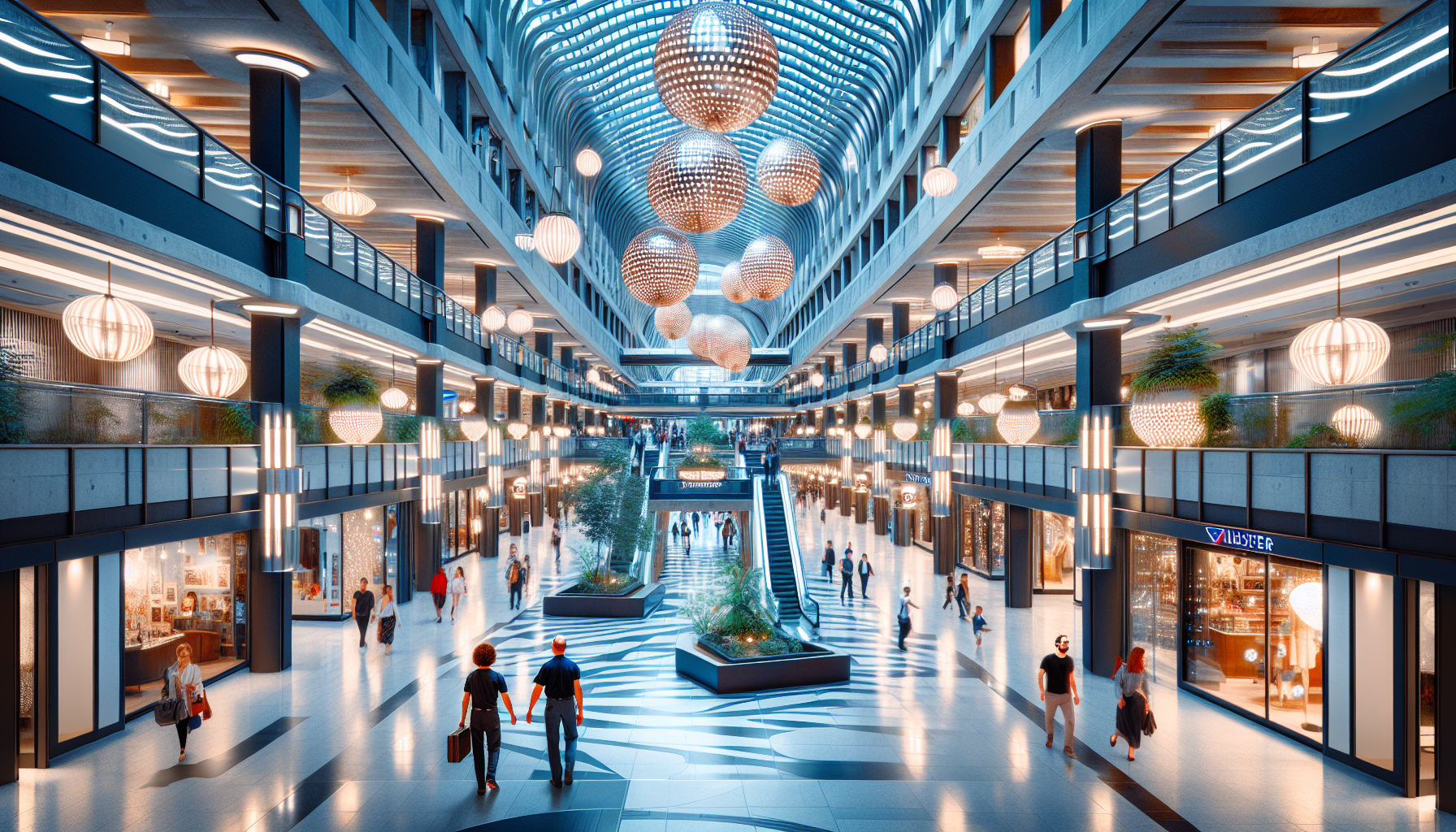
Conclusion
In concluding our exploration of Montreal’s Underground City, officially known as “La Ville Souterraine,” we have traversed a remarkable urban phenomenon that seamlessly blends utility with culture, history, and innovation. This subterranean network, spanning over 33 kilometers, is not just a feat of engineering but a testament to human creativity and adaptability. Let’s recap some of the critical points we’ve covered throughout this article.
Firstly, we delved into the origins of the Underground City, understanding its development in response to Montreal’s harsh winters. What started as a single underground shopping mall in the early 1960s has evolved into an extensive labyrinth of interconnected spaces. This network includes shopping centers, hotels, metro stations, universities, and residential complexes, offering shelter and convenience to millions of users annually.
A significant aspect of our discussion was the economic impact of this subterranean marvel. The Underground City serves as a vital commercial hub, attracting tourists and supporting local
Toni Santos is a visual storyteller and artisan whose work explores the quiet power of what lies beneath. With a deep fascination for subterranean and hidden architecture, Toni uncovers the layers, voids, and forgotten spaces that shape our built environment from the shadows.
His art is a journey through the unseen — from ancient underground chambers to sealed passageways, service tunnels, and foundations buried in time. Each creation tells a story of silence, secrecy, and structure — revealing how absence and concealment can be just as meaningful as what’s visible above ground.
Whether working through visual compositions, architectural studies, or symbolic handcrafted pieces, Toni captures the soul of hidden spaces. His work bridges art and archaeology, blending design with discovery. Trained in visual design and traditional techniques, Toni creates with intention. His pieces don’t just depict — they interpret, inviting viewers to rethink what space, memory, and architecture mean when they’re hidden from view.
As the creative force behind Vizevex, Toni shares this perspective through curated visual narratives, symbolic collections, and interpretive essays that give voice to the quiet geometries beneath our feet.
His work is a tribute to:
The mystery of spaces built to be forgotten
The symbolism embedded in foundations, voids, and passageways
The timeless connection between human intention and hidden structure
Whether you’re an artist, an urban explorer, or someone fascinated by the unseen frameworks that support our world, Toni invites you into a realm where architecture becomes myth — one corridor, one layer, one buried story at a time.


